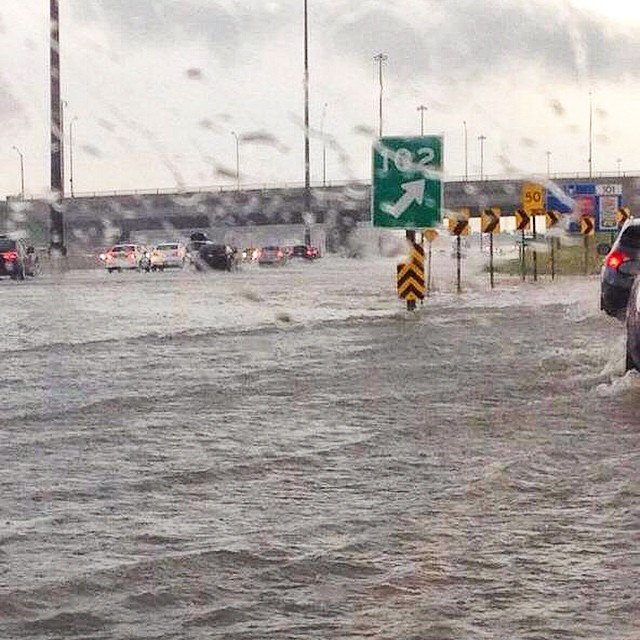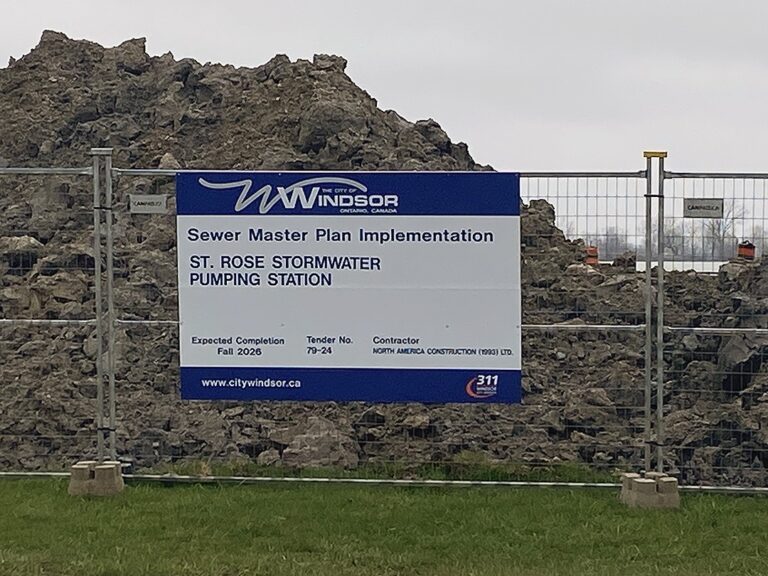When construction projects involve multi-level underground parking in areas with strained sewer capacity, it can present challenges in cities with aging infrastructure. Antiquated combined sewer systems can result in untreated wastewater and pollutants entering our local lakes, rivers, and streams from combined sewer overflows, rather than going to treatment plants.
While older cities such as Toronto and Vancouver have built storage tanks to alleviate the overflow during heavy rainstorms, other measures must be taken to reduce the strain as intense storm events are becoming more frequent. One cost-effective option to curtail sewer system overflow is to build above-grade parking garages. In this way, the existing sewer capacity could better handle stormwater inflow instead of treating groundwater.
Updating parking standards is thus an excellent area to tackle first. That is why the Residential and Civil Construction Alliance of Ontario (RCCAO) commissioned a report by the Ryerson Urban Analytics Institute on How Parking Regulations Need to Evolve for High-Rise Buildings.
Although the impetus for the study involved considering how the city could continue to grow in the face of infrastructure constraints, Ryerson researchers emphasized that evolving travel behaviour (such as the use of ride-hailing apps) and rising home buying costs, will have a great impact on future parking demand, especially in downtown urban markets. If municipalities do not plan carefully, below-grade parking garages could become a series of stranded assets across Canada that are likely to be a burden on future generations.
Ryerson found that Canada’s largest city has not meaningfully updated its parking standards since 1986 and has not addressed the consequences of maintaining strict minimum parking standards when demand for parking space is expected to decline in the future. Led by Professor Murtaza Haider, the study also recommends building above-grade parking in high-rise residential buildings instead of underground (or below-grade) parking. Above-grade parking is not only less expensive and quicker to construct but, more importantly, the space can be repurposed later if it becomes redundant, meaning there is a longer-term value proposition.
Above-grade parking also circumvents issues with groundwater that burdens sewer systems.
The construction of below-grade parking in areas with a high-water table has an adverse impact on stormwater capacity, as seen during the flash floods that hit Toronto on August 7, 2018. Among the headlines that day was the story of two men dramatically rescued by police after being trapped in a flooded underground parking elevator in the city’s west end. “The water was approaching our necks,” one of the men told the Toronto Star.
Unfortunately, Toronto’s Tall Building Design Guidelines state a preference for below-grade parking, and that is turning out to be a critical factor in addressing stormwater capacity concerns. If the municipal system has insufficient capacity to handle a peak load, then no connection to the sewer will be granted.
Toronto Water, an agency of the city, recently described how sewage capacity constraints in the form of private water discharge permits and/or long-term agreements for groundwater impacted seven high-rise building projects. If underground parking had not been required for the two commercial and five residential projects, the equivalent of nearly 20,000 additional suites could have been built. This represents a trade-off between the city’s current requirements for the provision of underground parking spaces and its intensification objectives.
The report finds that future parking requirements must consider a range of factors such as stormwater management, new trends in mobility and housing affordability. Punching more holes into the ground has a cumulative effect on hydrology—this can affect the hydrostatic pressure on buildings and can decrease the ground’s geological capacity to hold additional water from precipitation. This results in overwhelmed stormwater and sewer systems, creating significant safety, health, and sanitation problems from flooding and sewage overflows. Prohibiting above-ground parking and promoting water-tight below-grade parking will continue to exacerbate the overall stormwater problem. Each additional underground structure will increase pressure on the groundwater table.
We would also be remiss if we didn’t mention that constructing water-tight below-grade parking is an extremely costly and complex process.
- A good solution would be to upgrade the city’s aging infrastructure, but we can’t wait a decade or more for this to happen. Practical alternatives, as presented in the report, are to:
- Overhaul minimum parking standards to reflect the trend of lower parking demand.
- Encourage innovative above-grade parking garages that can be repurposed in the future.
We must be forward thinking in the way we plan new parking in urban centres across Canada. The consequences of building too much underground parking are profound, including overloading our stormwater and sewer systems. (The floods in August 2018 led to $80 million in insurance claims.)
Let’s embrace flexibility and plan properly for the future of parking in Canadian cities. Let’s change policy for minimum parking standards so that the generations that follow us can effectively use or repurpose what we planned decades before.









